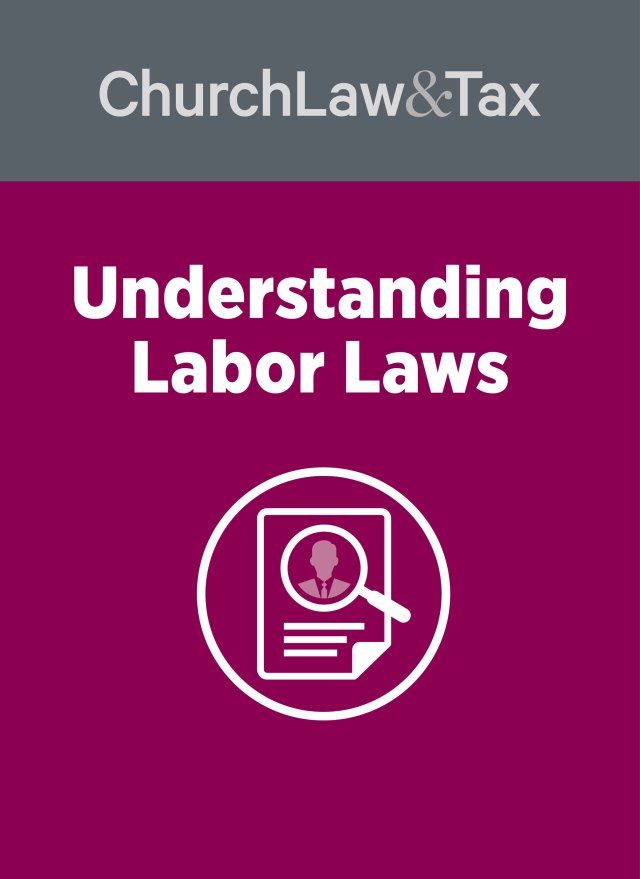When it comes to ministry-related job positions, many people don’t want to admit the importance of the compensation plan being offered, yet it remains a vitally important element in attracting and retaining qualified employees. For many managers, compensation systems remain shrouded in mystery. Here’s how to implement a formalized pay and benefits plan.
What a Plan Does for You
A formalized pay plan makes good business sense because it allows an employer to:
- Attract, hold, and motivate sufficient numbers of qualified employees to perform the work of the organization.
- Control compensation costs so that they are neither too high nor too low.
- Avoid charges of pay discrimination by disgruntled employees—an occurrence more common today than ever.
- Assure that differences in pay from one job to another are equitable.
- Assure that jobs requiring greater amounts of skill are, in fact, compensated more than jobs requiring lesser amounts of skill.
- Reward employees objectively for meritorious performance.
- Establish job sequences and lines of progression.
- Improve morale by reducing the likelihood of friction and complaints over perceived compensation inequities.
- Deal on a factual basis with compensation questions raised by employees.
A formalized compensation plan establishes an objective means for reaching decisions on pay. Moreover, it provides a sound basis for explaining those decisions to employees. The absence of a well thought-out pay plan usually leads to employee dissatisfaction, perceived inequities concerning pay, and ultimately to increased employee turnover.
Ideally, an organization ought to have a written compensation plan when it hires its very first employee. While the plan for one or a few employees should not be as formalized or detailed as a plan for a larger organization, it should cover essentially the same ground. Realistically, by the time an organization has ten distinct jobs—not employees, but separate jobs—it is ready for a compensation plan that includes a point system for evaluating jobs as well as other more formalized policies and procedures.
Seven Steps
The steps for implementing a salary administration plan are essentially the same for any organization, large or small.
Step 1—Create Job Descriptions.
Analyze existing jobs and write detailed descriptions of duties and responsibilities for each job to be covered by the plan. Because subsequent steps depend upon the accuracy of the job descriptions, this first step is crucial.
Have current job holders complete a comprehensive questionnaire concerning their duties and responsibilities. Then interview each employee to obtain additional information and clarification of job functions. Finally, write job descriptions and revise them until everyone concerned is satisfied that the descriptions are accurate reflections of the jobs.
A job description should be detailed, but not excessively wordy.
Step 2—Perform Job Evaluations.
The next step is to establish the relative worth of each job; that is, to evaluate all jobs on some systematic basis so they can be arranged in a hierarchy from the most important or most valuable job down to the least important or least valuable job.
There are several approaches to job evaluation, but the most widely used in American companies is the “point plan.” A point plan defines a number of compensable factors (those elements of skill or parts of a job for which an employer is willing to pay), divides each factor into several degrees, and assigns numerical values or “points” to each degree of each factor. Listed below are examples of commonly used factors. Normally a point plan uses between eight and ten compensable factors.
- Education
- Experience
- Job complexity
- Supervision received
- Monetary responsibility
- Contacts with others
- Confidential data
- Mental demands
- Working conditions
- Supervision given
Give each factor and every degree of each factor a detailed, written definition so that relative point values can be established for every job.
The actual job evaluations are best done by a committee of supervisors and managers familiar with all or most jobs in the organization. Each committee member reads the description of the job being evaluated, compares it with the detailed definitions of the factors, and decides which degree of each compensable factor he or she feels is appropriate for that job. Working alone, every committee member does this for each job. Then, meeting as a group, the evaluators report their individual evaluations, discuss any differences in evaluations, and finally arrive at a consensus evaluation for each job in the organization.
After the jobs have been evaluated, group them into classes according to their point values. Eight to twelve classes are sufficient in the majority of cases. Grouping jobs into classes reduces the number of separate pay rates that must be used in the compensation plan.
Step 3—Conduct a Salary Survey.
The next step is to determine what other organizations in the local labor market are paying to attract, hold, and motivate employees similar to those employed by your organization. This is done through a compensation survey that obtains information on salary, benefits, and other compensation practices.
The composition of the survey sample is extremely important. Many other institutions compete for the same kind of talent. Consequently, these institutions must be included in the survey if valid information is to be gathered.
To conduct the survey, select several “benchmark” jobs that are readily recognized and whose content is somewhat similar from institution to institution. Common benchmark jobs might include secretary, buyer, or accounts payable manager for an administrative pay plan. Ask the surveyed organizations to furnish salary information on all the benchmark jobs included in the survey.
An extremely important consideration in conducting the compensation survey is that like jobs must be compared with like jobs. Otherwise the results will be distorted. For example, an executive secretary’s job cannot be compared with a secretary’s job—the two are just not the same.
Step 4—Evaluate Job Pricing.
A complete compensation survey enables an organization to compare its own internal compensation rates with those being paid in the marketplace, and to make any adjustments required to bring internal rates into line with market rates.
Use the survey data to establish a salary structure—determine minimum and maximum pay rates for each job class. Developing the salary structure is the most challenging part of implementing a compensation plan. There is no universal structure that fits all institutions, nor is there a precise formula that automatically produces a structure. The structure that is appropriate for one organization may not be suitable for another. Thus, a great deal of professional judgment must be used to create a structure that is tailored to the requirements of a particular organization.
Among the factors that must be considered in designing the structure are: (a) the institution’s ability to pay; (b) the need to establish rates competitive with the local labor market; (c) the need to provide for sufficient employee pay progression within a single job class; (d) the desirability of limiting the number of job classes that overlap in rates; and (e) the desirability of establishing a structure that fits most currently paid jobs, limiting the number of jobs that fall either on the high side or the low side.
Step 5—Conduct Performance Appraisals.
Up to this point in implementing the pay plan, all of the work has been to establish the relative worth and monetary value of each job. But in addition to “paying the job,” a good compensation plan also provides for rewarding the individual. This is the task of performance appraisal.
On a periodic basis—usually annually—assess each employee’s performance to determine whether that performance merits an increase in pay, and, if so, how much of an increase.
Our sample employee performance appraisal form differs from many in use today. The sample form does not call for assessment of subjective factors and personality traits, such as initiative, judgment, tact, and appearance—factors which may not be related to actual job performance. The form addresses itself totally to the performance of job duties, thus minimizing the impact of subjectivity, and eliminating the risk of judging performance on the basis of traits which may only tenuously relate to carrying out job duties and responsibilities.
In order to use the sample form, every supervisor or manager must develop standards of performance for each job duty his or her employees perform. These standards are quantitative or qualitative measures that define expected performance; they serve as “yardsticks” for measuring how well an employee carries out job duties.
Regardless of the form or the approach used, the performance appraisal process must directly tie merit increases to actual performance on the job. Employees whose performance is high should receive larger increases in pay than employees whose performance is low.
Step 6—Develop Policies and Procedures.
Successful operation of the pay plan after implementation can be achieved only if comprehensive policies and procedures are developed. Among the areas which must be addressed are:
- Minimum and maximum hiring salaries
- Salary ceilings
- The frequency and amounts of merit increases
- Cost-of-living adjustments
- Promotions
- Transfers
- Job posting and bidding
- Job descriptions
- Job evaluations
- Salary surveys
- Performance appraisal
- Employee benefits
In fact, complete policy and procedure guidance is needed for every phase of the compensation plan. Write these guidelines in sufficient detail so that interpretation will be consistent from case to case.
Step 7—Review and Update.
Due to the rapid changes occurring in compensation rates and benefit programs, review the entire salary administration plan periodically—annually if possible—to determine if it is still adequate. Policies may need to be changed, and procedures may need to be revised.
The salary structure, in particular, may require updating. Re-survey salaries every twelve to eighteen months, at a minimum. If the market indicates that a change is needed in the pay structure, then change the entire structure from top to bottom in order to maintain the original relationship between compensation rates for each job class. This simple action will also eliminate the problem of pay compression.
Every Plan Unique
Why go to all the trouble and expense of developing a salary plan for a particular company? Why not just borrow one from another organization that might be willing to lend it? Undoubtedly, many pieces of a total compensation plan can be carried from one institution to another and used successfully: the job evaluation point plan, the performance appraisal form, and the policies and procedures for operating the plan are examples of parts of a plan that might be transferable.
However, the job descriptions and the salary structure are two essential parts of a pay plan that should be unique to each organization, and that usually cannot be transplanted from one institution to another.
Job descriptions are difficult to transplant because jobs of the same title vary in content from one organization to another. Some rewriting is always necessary to “force fit” borrowed job descriptions. Inasmuch as accurate job descriptions are absolutely crucial to valid job evaluations, it is wiser to write ones that correctly describe the jobs of your organization than it is to attempt to make another organization’s descriptions suffice.
As mentioned previously, always tailor salary structures to your organization in order to accommodate its ability to pay and to fit its particular circumstances—especially the local labor market. Borrowing a structure is certain to result in salaries and wages that are not in tune with a specific organization’s practices, philosophies, or labor market.
Remember Benefits
The magnitude of an organization’s benefits program as it fits into today’s pay plans is too great to consider in detail in this short article. However, a few comments are appropriate.
First, “fringe benefits” are no longer fringes. According to recent estimates, dollars spent on benefits in the U.S. amount to almost 40 percent of payroll costs. Indeed, benefits are now a significant part of any organization’s total compensation package. These benefits include life insurance, health insurance, AD&D insurance, dental and vision insurance, retirement plans, holidays, personal days, vacations, tuition refunds, employee assistance programs, child care, wellness centers, and many other programs.
Second, because they have assumed such a major proportion, benefits must be considered and planned for just as carefully as the basic compensation plan. Organizations must remain competitive in this area to attract, hold, and motivate qualified employees. Data collected during the periodic salary survey will keep an organization in touch with what other labor market institutions are providing, and provide guidance for making adjustments in the benefit package.
Implementing and administering a formalized compensation plan is neither as mysterious as some people believe it is, nor as simple as other people think it is. It is largely a matter of following a series of logical steps to reach a desired end.
Organizations of all sizes are quickly reaching the point where a well designed compensation system is a necessity, not a luxury. If your organization doesn’t have a formalized pay plan, it is missing out on the advantages provided by sound salary administration programs.




